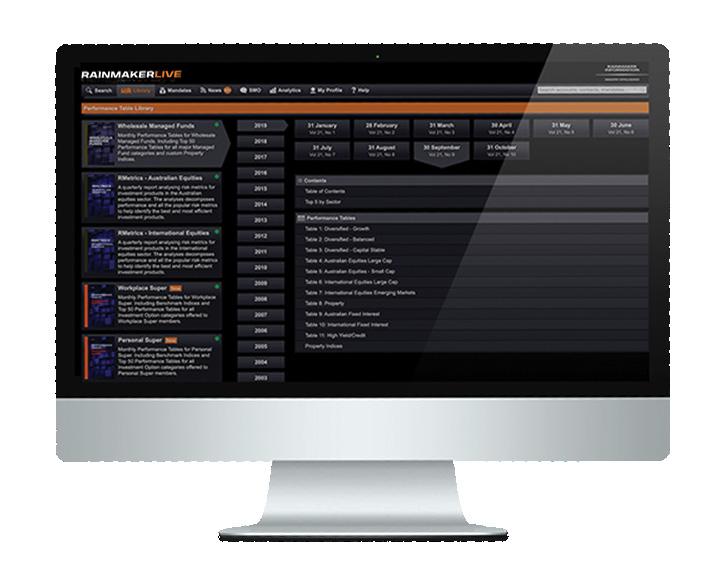
3 minute read
Four themes driving 2023, according to Iggo
Chloe Walker
Inflation, bonds, China, and the energy transition are at the top of AXA IM chief investment officer Chris Iggo’s 01 list of themes that will shape 2023.
Providing an outlook for the year ahead, Iggo said: “The economics profession did not prove to be very good at forecasting inflation in 2021 beyond that it might go up.”
“As such, any speculation that it will come down again carries the usual health warnings.”
However, top of his list, he said disinflation is underway.
According to Iggo, disinflation will reduce the need for additional increases in interest rates beyond what is already priced in i.e., 5% for the US Federal Reserve’s fed funds rate; 3.25% to 3.5% for the European Central Bank’s deposit rate; and 4.5% for the Bank of England’s bank rate.
“Further declines in inflation rates in the months ahead should be a positive driver of returns in both bonds and equities,” Iggo said.
“The implications for interest rates are clear, which should boost bond performance.”
While US real yields have not moved down enough yet to reverse the outperformance of value versus growth, at least so far, Iggo said that growth has started to come back.
“The early months of 2023 will be telling,” he said.
“The first half of the year tends to see the highest monthly increases in prices as wages and prices are increased. Given the amount of industrial action currently plaguing Europe there are some upside risks.”
Similarly, the re-opening of China might contribute to higher global energy and commodity prices, re-invigorating upstream costs for global companies.
“Both global and local Asian investors are likely to increase their exposure to Chinese equities, providing further support for the rally,” Iggo said.
On fixed income, Iggo said that Asian credit has already benefitted from more optimism around the Chinese growth outlook and the property sector’s stabilisation.
“With investment grade Asian US dollardenominated bonds yielding in the 5%-to-6% range global credit and emerging market bond investors are also likely to up their allocation to the region.”
According to Iggo, the fourth and final big theme in 2023 is the potential for an acceleration of investment spending in the energy transition.
In the US, this is linked to the Biden administration’s Inflation Reduction Act which will provide subsidies up to $465 billion for investment in renewable energy, electronic vehicles, semi-conductors and other technologies, Iggo said.
Therefore, it specifies that a lot of the content must be US produced.
He added: “In the rest of the world, governments are also likely to play a similarly interventionist role to address the need to meet CO2 emission targets and respond to heightened concerns about security in energy and technology.” fs
Inflation beats forecasts, hits 7.8%
Jamie Williamson
The official Consumer Price Index jumped 1.9% in the December 2022 quarter, rising to the highest annual rate of inflation in over 30 years.
The figures were released by the Australian Bureau of Statistics (ABS) and mark the fourth consecutive quarterly rise greater than any seen since the introduction of GST in 2000.
The annual CPI increase came in at 7.8%, the highest rate seen since 1990. While it didn’t hit the Reserve Bank of Australia’s expectation of 8%, it does outpace most economists’ forecasts.
The increase was primarily driven by increased domestic travel and accommodation (+13.3%), electricity (+8.6%) and international travel and accommodation (+7.6%). While these were to be expected given the time of year, the ABS noted that the increases were notably higher than previous December quarters.
Meanwhile, growth in prices for new dwellings (+1.7%) slowed relative to recent quarters (+3.7%) in September and +5.6% in June) but remained stronger than historic norms.
"Labour and material costs are driving price growth in this area, with signs of material cost pressures easing," ABS head of price statistics Michelle Marquardt said.
"Slowing demand for new dwelling construction was reflected in a lower quarterly rate of inflation for new dwellings this quarter compared with the past five quarters.”
Food prices continued to rise, driven by meals out and takeaway foods (+2.1%) as dining establishments pass on rising costs. However, vegetables (-10.2%) partially offset the rise, as the effects of unfavourable weather earlier in the year eased.
"The annual increase for the CPI is the highest since 1990. Annual inflation for goods such as new dwellings and automotive fuel steadied this quarter, however we saw an uptick in inflation for services such as holidays and restaurant meals," Marquardt said. fs



